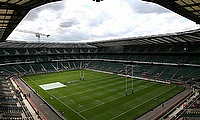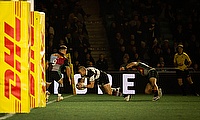The Barbarians - A Dying Breed?

The Barbarians - A Dying Breed?
The prospect of a Barbarians match creates a level of excitement in rugby fans that cannot be matched in a non-competitive match across any other sport. Founded in 1890 by William Percy Carpmael, the Barbarians have created their own legend and have since become part of the DNA of rugby union, representing everything which is loved about the sport. Their spirit, passion and flair won them fans the world over and their uniqueness was summed in their immortal motto; Rugby Football is a game for gentlemen in all classes, but no bad sportsman in any class. The Barbarians brand of courageous attacking rugby flourished throughout the 1970's and 80's, but since the advent of professionalism in 1995, questions have been raised about the viability of the team in an era of ever increasing international fixtures and elongated domestic seasons.
The Barbarians are not alone in their adversities; the traditional end of season tour has died somewhat of a death, with very few international teams playing midweek games when they travel to the Southern Hemisphere these days. Seventeen years on from the adoption of professionalism and the move has widely been regarded as the right one. It has seen a surge in the increase of registered players at both elite and grass roots levels, as well as an increase in television coverage of the sport, both internationally and domestically. As a result, the game has grown globally and continues to do so, something which can only be applauded, but the potential loss of the Barbarians, an iconic team which has transcended the generations, would be a stain against the move.
Ultimately any side, competitive or invitational, will be judged on results, and those results have not been too favourable in recent years. The lack of time together to train, unavailability of players involved in international fixtures and/or important domestic games and the decision of opposition to often not buy into the traditional free-flowing style of the BaaBaas and play a more effective tactical kicking game has seen the Barbarians fail to live up to the legacy created for them by players such as JPR Williams and R Underwood.
The recent matches against England, Ireland and Wales provide a good case study for the ways in which the Barbarians struggle in the modern game and also the ways that they need to evolve if they are to remain a permanent fixture on the rugby calendar. The squad for this tour, although far from the strongest ever put together by the Barbarians, featured the likes of M Muliana, J Smit, S Donald, S Tialata and E Joubert, players who are all certainly of international calibre but have effectively ruled themselves out of international contention due to playing abroad. Their talent and experience is desperately needed amongst a group of players who often have just three or four days to train together.
The tour provided a mixed bag of results for the invitational side, succumbing to losses against both England and Wales, but managing to beat a New Zealand-bound Irish side. Although the 57-26 score line suggests the Baabaas were somewhat humbled by England in their first match, the game was highly competitive early on, but a fairly strong English side showed the benefit of longer training times later in the game as they secured a comfortable victory. The subsequent 29-28 victory over Ireland, albeit playing a fairly non-Barbarian like, kicking-based game, was a morale booster, and the 30-21 loss to Wales at the end of the tour could easily have ended as a Barbarians victory, a victory which would have been made all the sweeter by the attacking flair demonstrated by the Baabaas during the game.
These results have shown the capability that the Barbarians still have to win at the international level and suggest that any proposal to disband the Barbarians would be a heinous mistake, and that perhaps the invitational side merely needs to evolve to survive in the modern era. Due to the proximity of Barbarians fixtures and international fixtures, the days of the Baabaas featuring a majority of international players are unfortunately over and expectations over player selection needs to mirror that. With a plethora of Southern Hemisphere players plying their trades in the Northern Hemisphere and a growing trend for the vice versa, there are plenty of players of international calibre available to represent the Barbarians, along with players coming to the end of their rugby careers. The Baabaas have become a fitting swansong for many players, many of whom have played their last game of professional rugby in the infamous black and white jersey, and there is great potential to combine these players with some of the best young talents in the game. In theory there would be no better showcase for players embarking on their rugby careers than in a Barbarians game, surrounded by players who have dominated the game over the last decade.
This unique combination of young and old is something which would breathe fresh life into a treasured rugby tradition. The friendships and bonds made within the Barbarians squads are also ones which will last a lifetime, and denying the next generation of rugby stars these opportunities would be a fatal mistake. It's the camaraderie and fellowship pioneered by the Barbarians which is one of the key components which separates rugby union from some of the ills experienced by sports such as football, and our sport would be lessened with its omission.
In an age where we can find time for competitions such as the LV Cup, both Autumn and Summer internationals between the two hemispheres, and playoff format endings to domestic seasons, surely there can be afforded time for two or three spectacles of exhibition rugby a year.









